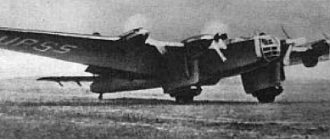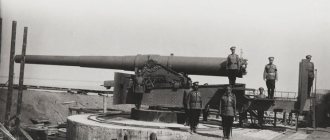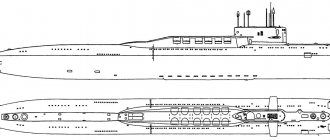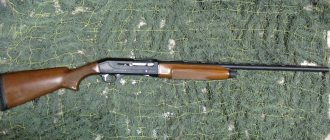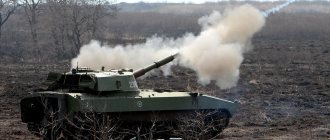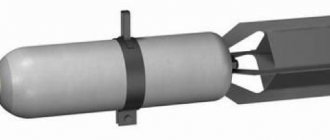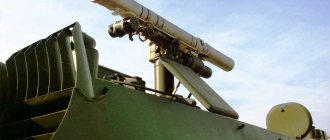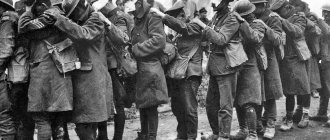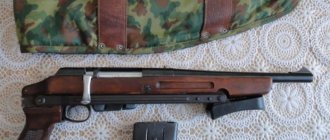You can only decide to storm Ishmael once in your life; fortunately, no one can repeat this experience again...
Suvorov
The capture of Izmail took place on December 11, 1790. During the battle, the Russian army, under the command of Alexander Vasilyevich Suvorov, won a brilliant victory, capturing a fortress with smaller forces, which was considered impregnable by many. As a result of this victory, a radical change was made in the Russian-Turkish war, as well as in strengthening Russia’s positions in the Black Sea and the Balkans.
Reasons for the need to capture the fortress
We can briefly highlight 4 main reasons that led to the need to capture Ishmael:
- The fortress made it possible to control the movement of infantry from one bank of the Danube River to the other, which significantly limited the possibilities for movement of the enemy army.
- The favorable geographical position of Izmail made it possible to almost completely control the mouth of the Danube, thereby controlling the fleet.
- Here ideal conditions were created for conducting offensive and counterattacks.
- The fortress was ideal for sheltering a large number of soldiers. The Turks themselves called Ishmael “Horde of the Wheel,” which literally translates as “army fortress.”
In fact, Ismail was an impregnable fortress, the possession of which provided significant advantages in military operations.
Actions of the Russian army before the appointment of Suvorov as commander in chief
In the second half of 1790, the Russian army won a number of major victories, but a very difficult situation arose. After the fall of the Turkish fortresses of Sulin, Isakcha, Tulcha and Kiliya, the garrisons that were forced to retreat took refuge in Izmail. A very strong garrison was formed in the fortress, which, using the favorable geographical location of the fortress, created significant advantages for the Turkish side.
In November 1790, the efforts of almost all countries interested in one way or another in the war focused on Ishmael. Catherine 2 gives the order to Field Marshal Potemkin to take possession of the fortress by the end of the year by any means necessary. Potemkin, in turn, gave the order to generals Gudovich, Pavel Potemkin and Deribas to take possession of the city. The generals could not do this; I am increasingly inclined to think that Ishmael is impregnable.
Morale in the army
The state of the Russian army near Izmail before the arrival of Suvorov can be described as decadent. The soldiers were tired of a large number of transitions, poor organization of the camp, shortages of food and constant skirmishes with the Turks. In fact, the army was in the open air, without the organization of huts or other shelters. It rained constantly in November, so the soldiers did not even have time to dry their clothes. This led to a large number of illnesses and loosening of discipline. The situation was complicated by the fact that the hospitals were poorly organized. Doctors lacked even the most basic medicines and dressing materials.
The Russian generals, who actually accepted the idea that Izmail was an impregnable fortress, did not act. They understood that they would not be able to storm the fortress on their own. As a result, the poor conditions for the army were aggravated by the delay of the command, which caused grumbling among the troops.
On November 28, 1790, the military council decided to lift the siege of Izmail. The army command was guided by the fact that there were not enough people to wage a siege, there were not enough assault guns, there was not enough artillery, ammunition and everything else necessary. As a result, approximately half of the troops were withdrawn from the fortress.
"Potemkin War"
In pre-revolutionary historiography this war was called Potemkin. In Soviet times - the second Russian-Turkish or the second Crimean. Each name has a specific meaning. Crimea was indeed at the center of the conflict. As a result of the first war (1768–1774), the peninsula was taken by our troops, but then abandoned - according to the Kuchuk-Kainardzhi Peace Treaty, the Crimean Khanate gained independence. For some time there was a struggle for influence, which the Turks ultimately won. After this, we had no choice but to send in troops and announce the annexation of Crimea to Russia. Turkish pride could not bear such an insult, and the Sultan declared war, although by and large the Ottomans were not ready for it.
Suvorov
Grigory Aleksandrovich Potemkin-Tavrichesky - Russian statesman, creator of the Black Sea Navy and its first commander-in-chief, Field Marshal General
Photo: commons.wikimedia.org
Losers are winners: Russia celebrates Military Glory Day
How the Battle of Sinop turned from a tragedy of the Russian fleet into a triumph of military valor
The initiator of the seizure of Crimea was His Serene Highness Prince Grigory Potemkin-Tavrichesky, who also commanded all Russian forces in the south. So the war was named after him quite deservedly. He perfectly understood the balance of power as a whole and realized that war for Russia was a rather meaningless and useless matter. The Sultan was a hostage to internal problems and could not show himself to be soft; moreover, European countries diligently pushed him into the war, hoping to weaken their competitors - Russia and Austria. The Turks had hopes of fighting with one of the sides, but Catherine II and the Austrian monarch Joseph II, after a joint visit to Crimea, acted as allies. By the way, the Potemkin villages, which turned into a historical anecdote, were revealed specifically to Joseph and the representatives of European countries who were part of the imperial retinue, who needed to be convinced that Russia had brought prosperity and prosperity to the new lands. The Turks lost the diplomatic campaign and were doomed in advance, but they could not retreat. Thus began a strange war, which the Porte seemed to declare, but the fighting took place on its own territory.
Conqueror of ice hummocks
How an orphan and the scion of a disgraced family made great discoveries in Russian Siberia
The Turks defiantly landed a small force in the area of the Russian fortress of Kinburn, which was thrown into the sea by Suvorov’s detachment. The only illusory chance of the Turks was the hope of defeating the Russians and Austrians piecemeal, preventing them from uniting. This could not be done. The Ottomans could only diligently avoid a general battle, hold on to their fortresses and try, through maneuvers, to achieve small successes with a numerical advantage in a specific place and at a specific moment. The war broke up into many episodes in which enemy units acted independently and solved local problems. Potemkin set his main goal to capture Achi-Kale (Ochakov), and most of the Russian troops under his command began to besiege the fortress. Things went slowly: the Turks were already inclined towards peace, and Potemkin did not want large sacrifices, expecting surrender. On the other hand, non-combat losses from disease and cold decimated the army that besieged Ochakov for six months no worse than Turkish bullets.
Suvorov
Alexander Vasilyevich Suvorov - Russian commander, founder of Russian military theory, national hero of Russia
Photo: commons.wikimedia.org
Made history: archaeologists found a unique settlement in Crimea
The estate was owned by the king of an ancient dynasty
Conscious passivity caused confrontation and even conflict between the main characters of the Russian army - Suvorov and Potemkin. The first demanded an immediate assault and capture of the city, while the second, being more of a politician than a commander, was in no hurry to take radical measures. Potemkin more than once showed personal courage in battles, but did not show outstanding talents as a military leader, which did not stop Catherine from appointing him commander, placing such recognized army authorities as Rumyantsev, Suvorov and Repnin under his command. This could not but cause their indignation, and as a result, the first two would leave the active army before the end of the campaign. Near Ochakov, Suvorov, tired of standing still, asked to be transferred to another place.
In December 1790, the fortress was nevertheless taken, and the assault took only a few hours. The losses of Russian troops amounted to about 2.5 thousand people - much less than died during the siege. Soon, Sultan Abdul Hamid I died of apoplexy, and a new young ruler, Selim III, ascended the throne. He, in fact, inherited the war, and although pride and fear of a military mutiny did not allow him to interrupt it immediately, in Russia it was believed that at the first opportunity the new ruler would try to speed up peace negotiations.
Height around: how the first Russian aviator school became elite
Why did the anniversary of the Kachin Flight School turn into a sad holiday?
Preparation for the assault by Suvorov
On November 25, 1790, Potemkin gave the order to Chief General Suvorov to immediately report to Izmail. The order was received on November 28 and Suvorov set off for the fortress from Galati, taking with him the troops he had previously trained: the Phanagorian Grenadier Regiment, the hunters of the Acheron Regiment (150 people) and the Arnauts (1000 people). Together with the troops, Suvorov sent food, 30 ladders for the assault and 1000 fascines (bundles of rods that were used to overcome ditches).
Early in the morning of December 2, Alexander Suvorov arrived near Izmail and took command of the garrison. The general immediately began training the army. First of all, Suvorov organized reconnaissance and positioned the troops in a semicircle around the fortress, forming a dense ring on land and an equally dense ring along the Danube, creating an element of complete siege of the garrison. Suvorov's main idea at Izmail was to convince the enemy that there would be no assault, but that all preparations were being made for a systematic and long-term siege of the fortress.
Training troops and deceiving the enemy
On the night of December 7, 2 batteries were erected on the eastern and western outskirts of the fortress, at a distance of up to 400 m, each containing 10 guns. On the same day, these guns began shelling the fortress.
Deep in his rear, out of sight of the Turkish army, Suvorov ordered the construction of an exact copy of Ismail. We are not talking about completely copying the fortress, but about recreating its moat, rampart and walls. It was here that, using a clear example, the general trained his troops, honing their actions to the point of automatism, so that in the future, during a real assault on the fortress, each person knew what he needed to do and understood how to behave in front of one or another fortification system. All training took place exclusively at night. This is not due to the specifics of preparations for the capture of Izmail, but to the specifics of Suvorov’s training of his armies. Alexander Vasilyevich liked to repeat that it was night exercises and night battles that provide the basis for victory.
To give the Turkish army the impression of preparing a long siege, Suvorov ordered:
- Fire from guns that were located close to the walls of the fortress.
- The fleet was constantly maneuvering and constantly firing sluggishly.
- Every night, rockets were launched to accustom the enemy to them and to disguise the real signal for the start of the assault.
These actions led to the fact that the Turkish side greatly overestimated the size of the Russian army. If in reality Suvorov had 31,000 people at his disposal, then the Turks were sure that he had about 80,000 people at his disposal.
Proposal to the Ishmael garrison to surrender
Catherine 2 insisted on the rapid capture of the fortress, so on December 7 at 14:00 Suvorov conveyed to the commandant of Izmail (Aydozli-Mehmet Pasha) a proposal to surrender the fortress, but was refused. After this, envoys were sent to the fortress, through whom the general conveyed a message that later became popular.
I came here with the troops. 24 hours to think - free will. My first shot is bondage. Assault is death. Which I leave for your consideration.
Suvorov
Seraskir responded to this famous phrase by Suvorov with a phrase that is also widely known today: “it would be more likely for the Danube to stop flowing and the sky to bow to the ground than for Ishmael to fall.”
On December 8, Aidozli Mehmed Pasha sent Suvorov a proposal to give 10 days to think about his message about surrender. Thus, the Turks were playing for time, waiting for reinforcements. Suvorov refused, saying that if the white banner was not displayed immediately, the assault would begin. The Turks did not surrender.
How fortresses were taken in the 18th century
After the bastion system, improved by the French commander Vauban, was established in Europe in the 17th century, it became clear that taking a well-built fortress by storm was not only very difficult, but most likely pointless.
On the same topic
Educational program: fortifications of the past
The system of flank shelling of the advancing columns and the curtains, which were completely unaffected by artillery fire, made the losses during the assault so heavy that even success (which no one could guarantee) turned into a Pyrrhic victory.
But still, at that time even powerful fortifications could be taken. True, this required a completely different tactic, developed by the same Vauban - a gradual, or “correct” attack. It required leading to the walls of the fortress a line of parallels - wide trenches in which guns were installed that suppressed fortress artillery. The crowning parallel passed right under the curtain; there, under the cover of heavy fire, a mine was planted, the wall collapsed and the fortress could easily be captured.
Vauban himself took all the fortresses that he besieged, and the losses of his troops during the gradual attack were surprisingly low.
Unfortunately, in Russia in the 18th century, although Vauban was read, he was underestimated. Of all the methods of taking fortifications, they preferred blockade (that is, starving the enemy), bombardment or assault. Why? The reason is simple: carrying out a gradual attack required highly qualified military engineers, and there were problems with them in Russia. The outstanding military engineer Minich tried to solve them at one time, but in the decades that have passed since his removal from power, the Russian army has not achieved much success in this area.
The Capture of Kohlberg, artist - A. Kotzebue
The most famous sieges of the 18th century: Vyborg in 1710 - the city was taken by heavy bombardment, Danzig in 1734 - the same thing, Kolberg in 1761 - taken after the blockade.
Combat order for assault and position of troops
On December 9, 1790, at a meeting of the military council, a decision was made to storm Izmail. I consider it necessary to dwell on the main aspects of Suvorov’s combat order, since it clearly describes the disposition of Russian troops and the offensive plan. The capture was planned to be carried out in three directions:
- From the west, the attack is led by Pavel Potemkin and 7,500 people. Includes: Lvov detachment (5 battalions and 450 people), Lassi detachment (5 battalions, 178 people, more than 300 fascines), Meknob detachment (5 battalions, 178 people, more than 500 fascines).
- Samoilov and 12,000 men lead the attack from the east. Includes: Orlov's detachment (3,000 Cossacks, 200 soldiers, 610 fascines), Platov's detachment (5,000 Cossacks, 200 soldiers, 610 fascines), Kutuzov's detachment (5 battalions, 1,000 Cossacks, 120 soldiers, 610 fascines).
- Deribas and 9,000 men lead the attack from the south. Includes: Arsenyev’s detachment (3 battalions, 2000 Cossacks), Chepega’s detachment (3 battalions, 1000 Cossacks), Markov’s detachment (5 battalions, 1000 Cossacks).
The cavalry, which numbered 2,500 people, was supplied as a reserve.
Map of the assault on Izmail
Map of the assault on the Izmail fortress with a detailed examination of the actions of the Russian army.
Features of Suvorov's combat order
In the combat order, Suvorov demanded that each detachment allocate at least 2 battalions to its personal reserve. The reserve in the form of cavalry is a combined arms reserve and is divided between three detachments. The assault on the fortress is planned for December 11, 2-3 hours before dawn. All commanders must act coherently and not deviate from orders. Artillery preparation should begin on December 10 and be conducted from all guns with a firing depth of up to 1 km. The Russian army prohibits touching old people, women, children and civilians during battle.
Suvorov planned to begin the assault on Izmail 3 hours before dawn, since this allowed him to be near the walls of the fortress with the onset of daylight.
By order of Suvorov, all ships were loaded from one side. This made it possible to tilt the ships upward, as a result of which it was possible to use naval guns to conduct mounted fire on the fortress. This was extremely important, since the Russian army did not have enough field guns. Moreover, this was a new technique that had not been used by generals before Ishmael.
"Fortress without weak points"
The great warrior of Russia: the life and death of the fearless Ak Pasha
General Mikhail Skobelev was born 175 years ago
Back in the middle of the 18th century, Izmail was a small, provincial town, but when the Porte felt pressure from the growing power of Russia, they decided to turn it into the main stronghold of the Danube defensive line. For this, the Turks hired military engineers from France, the trendsetter in fortification fashion at that time. Contrary to popular belief, Ishmael did not have stone walls, with the exception of the only Tabiy bastion near the river bank. But this does not mean that the fortress was weak - on the contrary. It was a very modern and powerful field fortress, surrounded by ramparts, a moat and bastions. With the development of artillery, stone walls no longer made sense - earthen fortifications absorbed cannonballs much better, while the stone fell apart, and the knocked out fragments mowed down the defenders no worse than enemy shrapnel. In the new conditions, cannon and rifle fire became the basis of defense, and the defenders were covered by parapets, in front of which a ditch and rampart were built. The height difference from the bottom point of the ditch to the top point of the bastion reached 15–20 m, and the ditch was filled with water in places.
But the most important thing is that Ishmael was defended by a very strong garrison under the command of serasker Aidozly Muhammad Pasha. Its number is not reliably known; sources differ in estimates - from 15 thousand to 35 thousand fighters. It is known that Turkish military leaders were in the habit of not writing off those who had retired in order to receive salaries and supplies for them, so the list could differ greatly from the real one. In addition, more than half of the garrison consisted not of regular military personnel, but of militias who tried to scatter at the first opportunity. On the other hand, the garrisons of several Danube fortresses went to Izmail, which further strengthened it. The garrison had about 250 guns at its disposal. But the construction of the fortress was not completed; in any case, there were no fortifications on the river side at all, and the shore was covered only by a few field batteries and naval guns. However, the 500-meter Danube itself served as an excellent defense.
Suvorov
Count Alexander Nikolaevich Samoilov - Russian statesman, nephew of Grigory Potemkin, Prosecutor General of the Government Senate
Photo: commons.wikimedia.org
At the beginning of October, two Russian detachments of lieutenant generals Pavel Potemkin and Alexander Samoilov approached the fortress. They were not able to not only take the fortress, but even besiege it, without a fleet - they limited themselves to shelling the walls and the appearance of a blockade. The generals were in the same ranks, almost the same age, and both were close relatives of the commander-in-chief: one was Grigory Potemkin’s nephew, the other was his second cousin. The generals did not like each other, and no one wanted to give up primacy. Two weeks later, when de Ribas’s flotilla approached Ishmael, there were three equal commanders.
The first monument of the capital
Why were Citizen Minin and Prince Pozharsky immortalized in Moscow?
De Ribas acted much more decisively than his colleagues: as soon as he approached the city, he destroyed almost all the Turkish ships and set up batteries on an island in the middle of the Danube, which continuously fired at the coastal fortifications of the city. Before the Turks had time to come to their senses, troops were landed and managed to take the most powerful bastion - Tabia. For several days, the soldiers and Cossacks who were part of the flotilla held the bridgehead, but Potemkin and Samoilov did not dare to build on their success and launch an attack. De Ribas retreated.
The Russian troops stood at Izmail for a month, November was ending. It was necessary to either decide to attack or leave immediately, since wintering in the field was fraught with large losses. On November 26, Generals Samoilov and Potemkin at a military council decided to return to winter quarters and gave the order to prepare troops for the march. De Ribas refused to obey until ordered by the commander-in-chief.
Suvorov
Admiral Joseph de Ribas - Spanish nobleman by birth, Russian military officer and statesman
Photo: commons.wikimedia.org
Balance of forces and means
The Russian army consisted of 31,000 people, 607 guns (40 field and 567 on ships).
The Turkish army consisted of 43,000 people and 300 guns (excluding guns on ships, since there is no data on them).
We see that all the advantages and superiority were on the Turkish side. They were in a well-fortified fortress and had an army that was approximately 1.5 times larger than the enemy army. Any military expert, seeing these numbers, will say that the assault is suicide and an almost impossible task. And it is no coincidence that Suvorov wrote in his autobiography that the capture of Izmail is an event that happens only once in a lifetime, and it is impossible to repeat it. This is true, since there are simply no historical analogues of such victories in the modern history of mankind.
Fortifications of Izmail
The Izmail fortress had a favorable geographical location. It rose to a height in the Danube, which acted as a natural barrier on the southern side. On the western side, the fortress was surrounded by two lakes Kuchurluy and Alapukh. From the east the fortress was surrounded by Lake Kalabukh. The natural defense of Ishmael on three sides significantly limited the room for maneuver of enemy armies. A wide ravine ran along the fortress, which divided the city into two parts: the old fortress (western part of the city) and the new fortress (eastern part of the city).
In 1790, the Izmail fortress included the following defensive structures:
- The rampart around the fortress is more than 6 km long and with a maximum height of up to 10 m.
- A ditch with a width of 14 m and a depth of up to 13 m. Most of it was filled with water.
- 8 bastions, built in such a way that they had a large number of corners. A bastion is a protruding part of a fortress wall.
- In the southeastern part of the fortress there was a stone quarry 12 m high.
The southern side, to which the Danube adjoined, was the least fortified. The fact is that the Turks considered the river to be a strong obstacle, and also relied on their fleet, which was always supposed to hold back the enemy.
The city itself was in great danger during the assault on Izmail. Almost all the buildings in the city were made of stone with thick walls and a large number of towers. Therefore, in fact, each building represented a strong point from which defense could be launched.
The beginning of the assault on the fortress
On December 10, artillery preparation for the attack began. All 607 guns fired non-stop, increasing in intensity as night approached. Turkish artillery also responded, but towards the end of the day its salvoes practically ceased. By the end of December 10, the Turkish side had practically no artillery pieces left.
On December 11, at 3:00 a.m., a rocket was launched, signaling the Russian army to move into its original attack position. At 4:00 a.m. the second rocket was launched, at the signal of which the troops began to form into battle formation. At 5:30 on December 11, 1790, the third rocket was launched, which signaled the beginning of the assault on the Izmail fortress . It took several attacks to break into the city. The Turks often launched counterattacks that drove back the Russian army, after which it again went on the offensive, trying to take advantageous positions.
Already at 8:00 Russian troops captured all the walls of the fortress. From that moment on, Izmail’s attack was virtually over; the Turkish army retreated into the depths of the city, and Russian soldiers closed a circle inside Izmail, creating an encirclement. The complete unification of the Russian army and the completion of the encirclement occurred at 10 am. Until about 11, fighting continued for the outskirts of the city. Each house had to be taken with a fight, but due to the courageous actions of the Russian soldiers, the ring was getting tighter and tighter. Suvorov ordered the introduction of light cannons, which fired grapeshot into the city streets. This was an important point, since the Turks at this point no longer had artillery and could not respond in a similar way.
The last center of resistance to the Turkish army in Izmail was formed in the city square, where 5,000 Janissaries, led by Kaplan-Girey, defended. Russian soldiers, trained by Suvorov to use bayonets, pressed back the enemy. In order to win the final victory, Suvorov gave the order to the cavalry, who were in reserve, to attack the city square. After this, resistance was completely broken. At 4 o'clock in the afternoon the assault on Izmail was over. The fortress fell. Nevertheless, even before the end of December 12, rare shooting continued in the city, as isolated Turkish soldiers took refuge in basements and mosques, continuing to defend. But ultimately these resistances were suppressed.
Only one Turk managed to escape alive. At the beginning of the battle, he was slightly wounded and fell from the fortress wall, after which he fled. The rest of the troops were mostly killed, a smaller part was taken prisoner. Suvorov sent a message to the empress: “The Russian flag is on the walls of Izmail.”
Nikolay Starikov
Source: iz.ru When Crimea first became ours.
“You can decide on such an assault only once in your life,” Suvorov later admitted. But he decided, although he had the opportunity to retreat without loss to his reputation, regroup his forces and prepare. The risk of defeat really existed and, perhaps, threatened Suvorov, if not with the collapse of his career, then with the undermining of his authority. And today, after more than two centuries, the capture of Izmail by Russian troops on December 24, 1790 remains the apogee of the glory of the great commander with his miracle heroes and is deservedly revered as the day of military glory of Russia. Izvestia recalls those heroic days.
"Potemkin War"
In pre-revolutionary historiography this war was called Potemkin. In Soviet times - the second Russian-Turkish or the second Crimean. Each name has a specific meaning. Crimea was indeed at the center of the conflict. As a result of the first war (1768–1774), the peninsula was taken by our troops, but then abandoned - according to the Kuchuk-Kainardzhi Peace Treaty, the Crimean Khanate gained independence. For some time there was a struggle for influence, which the Turks ultimately won. After this, we had no choice but to send in troops and announce the annexation of Crimea to Russia. Turkish pride could not bear such an insult, and the Sultan declared war, although by and large the Ottomans were not ready for it.
The initiator of the seizure of Crimea was His Serene Highness Prince Grigory Potemkin-Tavrichesky, who also commanded all Russian forces in the south. So the war was named after him quite deservedly. He perfectly understood the balance of power as a whole and realized that war for Russia was a rather meaningless and useless matter. The Sultan was a hostage to internal problems and could not show himself to be soft; moreover, European countries diligently pushed him into the war, hoping to weaken their competitors - Russia and Austria. The Turks had hopes of fighting with one of the sides, but Catherine II and the Austrian monarch Joseph II, after a joint visit to Crimea, acted as allies. By the way, the Potemkin villages, which turned into a historical anecdote, were revealed specifically to Joseph and the representatives of European countries who were part of the imperial retinue, who needed to be convinced that Russia had brought prosperity and prosperity to the new lands. The Turks lost the diplomatic campaign and were doomed in advance, but they could not retreat. Thus began a strange war, which the Porte seemed to declare, but the fighting took place on its own territory.
The Turks defiantly landed a small force in the area of the Russian fortress of Kinburn, which was thrown into the sea by Suvorov’s detachment. The only illusory chance of the Turks was the hope of defeating the Russians and Austrians piecemeal, preventing them from uniting. This could not be done. The Ottomans could only diligently avoid a general battle, hold on to their fortresses and try, through maneuvers, to achieve small successes with a numerical advantage in a specific place and at a specific moment. The war broke up into many episodes in which enemy units acted independently and solved local problems. Potemkin set his main goal to capture Achi-Kale (Ochakov), and most of the Russian troops under his command began to besiege the fortress. Things went slowly: the Turks were already inclined towards peace, and Potemkin did not want large sacrifices, expecting surrender. On the other hand, non-combat losses from disease and cold decimated the army that besieged Ochakov for six months no worse than Turkish bullets.
Conscious passivity caused confrontation and even conflict between the main characters of the Russian army - Suvorov and Potemkin. The first demanded an immediate assault and capture of the city, while the second, being more of a politician than a commander, was in no hurry to take radical measures. Potemkin more than once showed personal courage in battles, but did not show outstanding talents as a military leader, which did not stop Catherine from appointing him commander, placing such recognized army authorities as Rumyantsev, Suvorov and Repnin under his command. This could not but cause their indignation, and as a result, the first two would leave the active army before the end of the campaign. Near Ochakov, Suvorov, tired of standing still, asked to be transferred to another place.
In December 1790, the fortress was nevertheless taken, and the assault took only a few hours. The losses of Russian troops amounted to about 2.5 thousand people - much less than died during the siege. Soon, Sultan Abdul Hamid I died of apoplexy, and a new young ruler, Selim III, ascended the throne. He, in fact, inherited the war, and although pride and fear of a military mutiny did not allow him to interrupt it immediately, in Russia it was believed that at the first opportunity the new ruler would try to speed up peace negotiations.
Danube frontier
The capture of Ochakov, the main Turkish outpost in the Dnieper-Bug estuary and the entire Northern Black Sea region, allowed Russian troops to calmly invade Moldova and Bessarabia. Peace negotiations soon began, and it was important what positions the troops would be in by the time they ended. Each captured district or fortress became arguments in diplomatic trade. On the other hand, it was almost impossible to predict which trump cards would play and which ones would not. Potemkin was establishing a peaceful life in Iasi, and the activity of the commanders of individual armies was actually left to their ambition. Suvorov, with a small detachment and the Austrians, distinguished himself at Rymnik, Prince Nikolai Repnin - at the Salcha River, Ivan Gudovich took Khadzhibey (on the site of modern Odessa) and Akkerman (Belgorod-Dnestrovsky), after which the Turks were forced to leave Bendery. Russian troops reached the Danube, but Potemkin was in no hurry to go further.
There was a certain logic to this. The successes of the coalition seriously alarmed Prussia and England. In the Netherlands and Belgium, which were part of the Austrian Empire, under the influence of events in France, a rebellion broke out, which went down in history as the Brabant Revolution, and the Turks also won a number of victories over the army of the Prince of Coburg. These troubles in February 1790 were crowned by the death of Catherine's faithful friend Emperor Joseph. His successor Leopold quickly moved on to negotiations with the Prussians and signed the Reichenbach Convention, according to which he refused Russian assistance in the war with the Turks. Catherine was left alone against the Sultan, with a fairly clear threat of opening a second front in the west. To recklessly move forward beyond the Danube in such a situation was dangerous and short-sighted.
On the other hand, military successes could advance peace negotiations with Istanbul on terms favorable to Russia. Bright victories were needed. The capture of the strongest Turkish fortress on the Danube would immediately open the way to the south and would tilt the situation in the theater of military operations in favor of Russia. While there was a strong Turkish garrison in Izmail, movement inland was impossible. The troops of Repnin and Gudovich approached Izmail twice, but, remembering Potemkin’s order to “take care of people,” they refrained from storming. The problem was that the fortress stood on the wide Danube, which was covered by the Turkish flotilla, but for the time being we had no ships there.
Actually, the transfer of the Russian flotilla to the Danube became the first and, perhaps, fundamental phase of the operation. Under the cover of the Black Sea squadron, light river vessels crossed along the coast from the Dniester estuary to the Danube, destroying and capturing Turkish fortresses along the way. The Liman flotilla was led by Admiral Joseph (Jose) de Ribas. In October, Fyodor Ushakov’s squadron left to wait out the stormy period at the base in Sevastopol, and de Ribas’s flotilla entered the mouth of the Danube. Operating from the river and land, Russian troops quickly took the fortresses of Kiliya, Tulcha, Isacchu, Braila and Galati, the garrisons of which went to Izmail. So this city became the central location of the entire campaign.
"Fortress without weak points"
Back in the middle of the 18th century, Izmail was a small, provincial town, but when the Porte felt pressure from the growing power of Russia, they decided to turn it into the main stronghold of the Danube defensive line. For this, the Turks hired military engineers from France, the trendsetter in fortification fashion at that time. Contrary to popular belief, Ishmael did not have stone walls, with the exception of the only Tabiy bastion near the river bank. But this does not mean that the fortress was weak - on the contrary. It was a very modern and powerful field fortress, surrounded by ramparts, a moat and bastions. With the development of artillery, stone walls no longer made sense - earthen fortifications absorbed cannonballs much better, while the stone fell apart, and the knocked out fragments mowed down the defenders no worse than enemy shrapnel. In the new conditions, cannon and rifle fire became the basis of defense, and the defenders were covered by parapets, in front of which a ditch and rampart were built. The height difference from the bottom point of the ditch to the top point of the bastion reached 15–20 m, and the ditch was filled with water in places.
But the most important thing is that Ishmael was defended by a very strong garrison under the command of serasker Aidozly Muhammad Pasha. Its number is not reliably known; sources differ in estimates - from 15 thousand to 35 thousand fighters. It is known that Turkish military leaders were in the habit of not writing off those who had retired in order to receive salaries and supplies for them, so the list could differ greatly from the real one. In addition, more than half of the garrison consisted not of regular military personnel, but of militias who tried to scatter at the first opportunity. On the other hand, the garrisons of several Danube fortresses went to Izmail, which further strengthened it. The garrison had about 250 guns at its disposal. But the construction of the fortress was not completed; in any case, there were no fortifications on the river side at all, and the shore was covered only by a few field batteries and naval guns. However, the 500-meter Danube itself served as an excellent defense.
At the beginning of October, two Russian detachments of lieutenant generals Pavel Potemkin and Alexander Samoilov approached the fortress. They were not able to not only take the fortress, but even besiege it, without a fleet - they limited themselves to shelling the walls and the appearance of a blockade. The generals were in the same ranks, almost the same age, and both were close relatives of the commander-in-chief: one was Grigory Potemkin’s nephew, the other was his second cousin. The generals did not like each other, and no one wanted to give up primacy. Two weeks later, when de Ribas’s flotilla approached Ishmael, there were three equal commanders.
De Ribas acted much more decisively than his colleagues: as soon as he approached the city, he destroyed almost all the Turkish ships and set up batteries on an island in the middle of the Danube, which continuously fired at the coastal fortifications of the city. Before the Turks had time to come to their senses, troops were landed and managed to take the most powerful bastion - Tabia. For several days, the soldiers and Cossacks who were part of the flotilla held the bridgehead, but Potemkin and Samoilov did not dare to build on their success and launch an attack. De Ribas retreated.
The Russian troops stood at Izmail for a month, November was ending. It was necessary to either decide to attack or leave immediately, since wintering in the field was fraught with large losses. On November 26, Generals Samoilov and Potemkin at a military council decided to return to winter quarters and gave the order to prepare troops for the march. De Ribas refused to obey until ordered by the commander-in-chief.
Danube Troy, or Russian Iliad
Potemkin-Tavrichesky faced a difficult task. On the one hand, the retreat from Ishmael could be regarded as a general failure of the 1790 campaign, moreover caused by the indecisiveness of his relatives and protégés. And in winter the Serene Highness had to go to the capital and report to the empress. He also needed a triumph like Ochakov’s because a new favorite, Platon Zubov, appeared next to the empress, and this circumstance made Grigory Alexandrovich very nervous. On the other hand, the capture of Izmail in December could not lead to the end of the war, since it was not possible to develop success in the winter. And the risk of defeat was great. And then the cunning courtier undertakes the only maneuver that allows him to kill all the birds with one stone: he writes a letter to the Chief General Count Suvorov with a proposal to lead the attack on the fortress.
From Potemkin’s letter to Suvorov:
“I leave it to Your Excellency to act here at your best discretion, whether by continuing the enterprises in Izmail or leaving Onago.”
Suvorov will take Izmail - the commander-in-chief won the campaign. And if Suvorov leaves the fortress, there will be no complaints against Potemkin: he sent the famous General Forward to storm, and it is not his fault that the enterprise turned out to be impossible. The risk of defeat also lies with Suvorov, because the commander-in-chief did not give the order to definitely take the city.
Suvorov and his detachment were nearby and immediately went to Izmail. Alone, only with an orderly. Although he had never seen the fortress, even from the road he sent an order to Potemkin and Samoilov: “Deploy the troops and return to their positions!” It seems that the general did not even think about retreat. The next day, following Suvorov, his beloved Phanagorian Grenadier and Absheron Musketeer regiments set out. “Gentlemen veterans,” as Suvorov called them.
On December 13 (new style) Suvorov arrived at Izmail. “A fortress without weak points,” he will say after the first inspection and immediately come up with a way to take it. Of course, he did not order the construction of a similar fortress nearby, as the legend says, but he did force the soldiers to train: special groups in each detachment had to learn how to set up ladders with lightning speed to overcome steep ramparts. The stairs themselves, of course, still needed to be prepared. The rest of the warriors, free from combat work, dispersed around the surrounding area to collect poles, from which they prepared fascines for filling the ditch.
Generals and officers received precise instructions for the assault, literally minute by minute. Everything was decided by speed, coherence, and discipline. And of course, the fearlessness of the troops. Suvorov did not hide his intentions and the very fact of his arrival; on the contrary, he decided to use the glory ahead of him.
“I arrived here with the troops. Twenty-four hours for reflection - and will. My first shot is already bondage. Assault is death." This is an ultimatum that was issued to the Turks. The serasker’s answer was equally laconic, but more pathetic: “It would be more likely for the Danube to flow backward and the sky to fall to the ground than for Ishmael to surrender.” To reinforce the firmness of his troops, the Sultan sent: execution threatened anyone who remained alive in the event of the surrender of the fortress.
After the expiration of the proposed period, the serasker agreed to enter into negotiations, but Suvorov saw in this an intention to delay time and refused the meeting. “It’s too late,” the general answered the parliamentarians. On December 21, a week after Suvorov’s arrival, Russian artillery began a massive shelling of the fortifications. At three o'clock in the morning the next day, the troops moved into position and at 5:30, about an hour and a half before dawn, launched an attack.
Thunder of Victory
Suvorov attacked in nine columns from three sides: Potemkin, Samoilov and de Ribas formed three detachments each. Only one, the strongest northern side, was not attacked, and it was there that Suvorov himself had been prancing in front of the enemy troops the entire previous day. Knowing his manner of being in the thick of battle, the Turks decided that the main blow would be there, but it turned out to be the opposite. But there were Russian reserves here to prevent attacks.
The darkness hid the attackers, the Turks were forced to fire blindly from cannons and rifles. The Russians, coming close, threw hand grenades, set up ladders and went on the attack. The skill acquired during a week of training helped me do this quickly and practically by touch. There was no one main attack; the plan of attack was based on the successes achieved. The most successful was de Ribas, who had stronger artillery support - one of his columns again managed to take Tabia. The Phanagorians who broke into the bastion did not go into the city, but along the fortifications, helping their comrades from other detachments. The rest of the detachments, who were lucky, acted in the same way: the columns of generals Lassi, Lvov, Golenishchev-Kutuzov, brigadiers Markov and Platov. But not everyone was successful: the column of General Fyodor Meknob missed the intended assault site and ran into higher fortifications. The length of the prepared ladders was not enough; they had to be tied together under fire. The Turks counterattacked him and the neighboring column of General Orlov - only the reserve cavalry arrived in time to save them from defeat.
By dawn, the fortifications were in the hands of Russian troops, the Turks retreated to the city. But Suvorov was in no hurry to build on his success. To begin with, he gave the troops a rest, ordered the fortress guns to be deployed and the field artillery guns to be brought up. Only after this the troops entered Izmail. The Turks fought for every house, but Suvorov ordered not to spare anyone and to use artillery to reduce their losses. The streets were shot through with grapeshot, and the houses where enemy troops had settled were destroyed with cannonballs. The battle was bloody and lasted almost a day. 16 bayonet wounds were later found on the body of the killed serasker. Relatives of the last Crimean Khan Kaplan Giray and Meksud Giray with a detachment of Crimean Tatars tried to escape from the city and died in battle. By the evening of December 22, Izmail was taken, although in some places the Turks resisted even the next day.
The Turkish army no longer existed. The losses of the attackers, although not comparable to those of the enemy, also turned out to be significant: about 10 thousand people were killed and wounded, almost a third of the detachment. All participants in the assault were generously awarded titles and orders, only Alexander Vasilyevich himself remained dissatisfied - he already had all possible Russian orders and was counting on the rank of Field Marshal, but then he would have stood on a par with his direct commander Potemkin, whom, by the way, was 10 years older. Catherine decided not to upset Grigory Alexandrovich and limited herself to other signs of attention to Suvorov: money (“I gave him a whole cartload of diamonds,” the Empress wrote to Potemkin), a medal with his name and the awarding of the honorary title of lieutenant colonel of the Preobrazhensky Regiment. But the most offensive thing was that Potemkin left for the capital, leaving Repnin, not Suvorov, as commander. The ambitious 60-year-old Suvorov was terribly offended and, allegedly due to illness, asked permission to leave the theater of military operations. The capture of Izmail prompted Gabriel Derzhavin himself, the most famous poet of that time, to compose with the composer Osip Kozlovsky the song “Thunder of Victory, Ring Out!”, which until 1816 remained the unofficial anthem of the Russian Empire.
As expected, in the spring the Turks tried to take revenge or at least improve the conditions of peace, but the vizier’s army was defeated by Prince Nikolai Repnin at Machin. Potemkin had unexpectedly died by this time, and the peace treaty in Iasi was signed by two heroes of Izmail - Samoilov and de Ribas. The ruins of the fortress itself were returned to the Porte. But soon, on the lands conquered from the Turks near the Khadzhibey fortress taken by the Liman flotilla, a city was founded, called Odessa. And, curiously, all four founding fathers and cult figures for Odessa residents - the first governor de Ribas, engineer-colonel Franz de Volan, Duke Armand de Richelieu and Alexander Langeron - fought together at Izmail. Under the command of the great Suvorov.
Author: Georgy Oltarzhevsky
If you find an error, please select a piece of text and press Ctrl+Enter.
Losses of the parties
The Turkish army lost 33,000 people killed and wounded, and 10,000 prisoners. Among the dead were: commandant Izmail Aydozli Mehmet Pasha, 12 pashas (generals), 51 senior officers.
The Russian army lost 1830 people killed and 2933 people wounded. During the assault, 2 generals and 65 officers were killed. These figures were in Suvorov's report. Later historians said that during the capture of the Izmail fortress, 4 thousand people died and 6 thousand were wounded.
As trophies, Suvorov's army captured: up to 300 guns (in different sources the figure ranges from 265 to 300), 345 banners, 42 ships, 50 tons of gunpowder, 20,000 cannonballs, 15,000 horses, jewelry and food supplies for the garrison and the city for six months.
Historical consequences
Suvorov's victory at Izmail was of great significance for the Russian-Turkish war. Many Turkish fortresses, whose garrisons considered Izmail impregnable, began to surrender to the Russian army without a fight. As a result, a radical change was made in the war.
The capture of Izmail also had important political significance. On December 11, a meeting of representatives of England, Austria, Prussia, France and Poland was held in the city of Sistav (Balkans). They were developing a plan to help Turkey in the war against Russia. The arriving news of the fall of Ishmael caused a real shock, as a result of which the meeting was interrupted for 2 days. It never ended in anything, since it became clear that Turkey lost the war.
The capture of the Izmailov fortress made it possible to open a direct road for the Russian army to Constantinople. This was a direct blow to the sovereignty of Turkey, which for the first time faced the threat of complete loss of statehood. As a result, she was forced in 1791 to sign a peace treaty in Iasi, which meant her defeat.
Danube frontier
The capture of Ochakov, the main Turkish outpost in the Dnieper-Bug estuary and the entire Northern Black Sea region, allowed Russian troops to calmly invade Moldova and Bessarabia. Peace negotiations soon began, and it was important what positions the troops would be in by the time they ended. Each captured district or fortress became arguments in diplomatic trade. On the other hand, it was almost impossible to predict which trump cards would play and which ones would not. Potemkin was establishing a peaceful life in Iasi, and the activity of the commanders of individual armies was actually left to their ambition. Suvorov, with a small detachment and the Austrians, distinguished himself at Rymnik, Prince Nikolai Repnin - at the Salcha River, Ivan Gudovich took Khadzhibey (on the site of modern Odessa) and Akkerman (Belgorod-Dnestrovsky), after which the Turks were forced to leave Bendery. Russian troops reached the Danube, but Potemkin was in no hurry to go further.
Suvorov
Painting by Yan Sukhodolsky “Assault on Ochakov”
Photo: commons.wikimedia.org
There was a certain logic to this. The successes of the coalition seriously alarmed Prussia and England. In the Netherlands and Belgium, which were part of the Austrian Empire, under the influence of events in France, a rebellion broke out, which went down in history as the Brabant Revolution, and the Turks also won a number of victories over the army of the Prince of Coburg. These troubles in February 1790 were crowned by the death of Catherine's faithful friend Emperor Joseph. His successor Leopold quickly moved on to negotiations with the Prussians and signed the Reichenbach Convention, according to which he refused Russian assistance in the war with the Turks. Catherine was left alone against the Sultan, with a fairly clear threat of opening a second front in the west. To recklessly move forward beyond the Danube in such a situation was dangerous and short-sighted.
Allied pioneer: how a peasant boy became a Soviet saint
Exactly 100 years ago Pavlik Morozov was born
On the other hand, military successes could advance peace negotiations with Istanbul on terms favorable to Russia. Bright victories were needed. The capture of the strongest Turkish fortress on the Danube would immediately open the way to the south and would tilt the situation in the theater of military operations in favor of Russia. While there was a strong Turkish garrison in Izmail, movement inland was impossible. The troops of Repnin and Gudovich approached Izmail twice, but, remembering Potemkin’s order to “take care of people,” they refrained from storming. The problem was that the fortress stood on the wide Danube, which was covered by the Turkish flotilla, but for the time being we had no ships there.
Actually, the transfer of the Russian flotilla to the Danube became the first and, perhaps, fundamental phase of the operation. Under the cover of the Black Sea squadron, light river vessels crossed along the coast from the Dniester estuary to the Danube, destroying and capturing Turkish fortresses along the way. The Liman flotilla was led by Admiral Joseph (Jose) de Ribas. In October, Fyodor Ushakov’s squadron left to wait out the stormy period at the base in Sevastopol, and de Ribas’s flotilla entered the mouth of the Danube. Operating from the river and land, Russian troops quickly took the fortresses of Kiliya, Tulcha, Isacchu, Braila and Galati, the garrisons of which went to Izmail. So this city became the central location of the entire campaign.
Photo: commons.wikimedia.org/
Izmail Fortress

